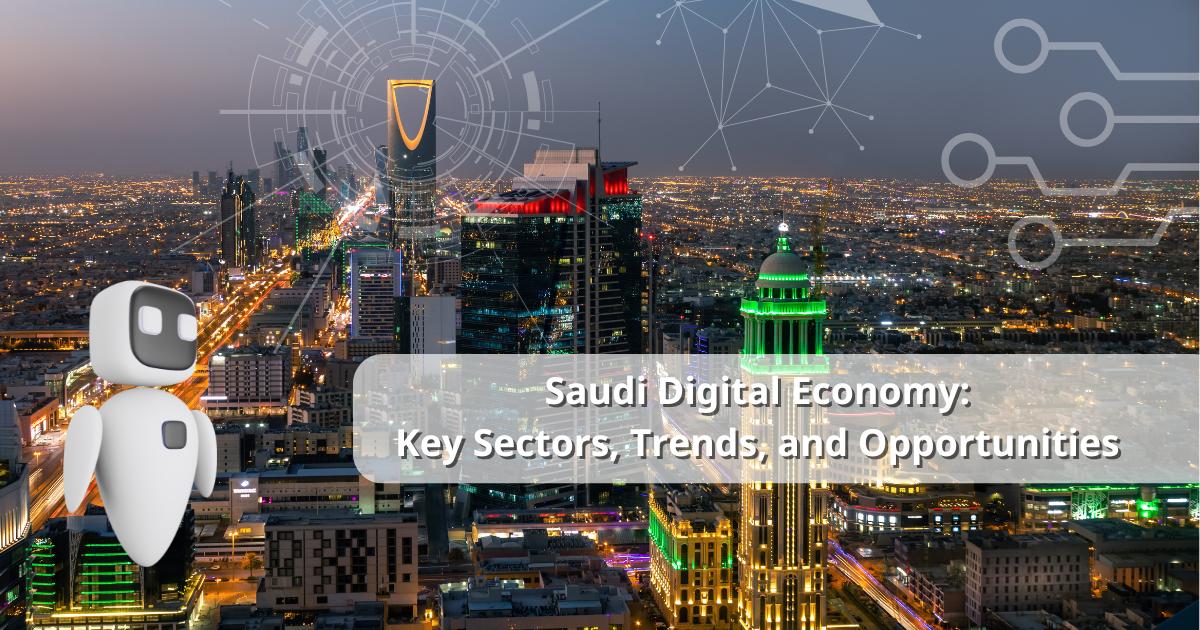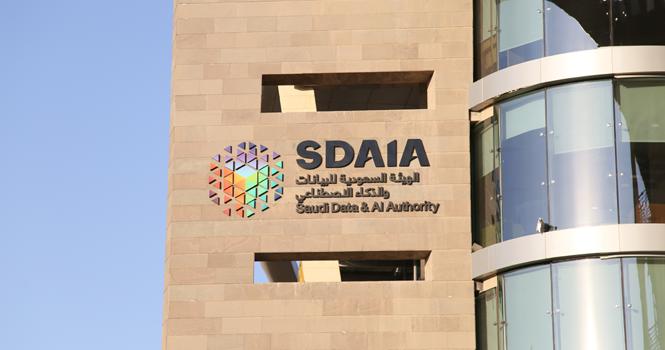
Saudi Arabia’s Digital Economy in 2025: Vision 2030’s Tech-Driven Transformation
Table of Contents
The Saudi Digital Economy refers to the broad adoption of digital technologies across businesses, government, and daily life in Saudi Arabia. It encompasses everything from e-commerce and fintech to cloud computing and smart cities. This digital drive is a cornerstone of Vision 2030, the Kingdom’s ambitious development blueprint that seeks to diversify the economy and reduce reliance on oil.
At its heart is a push to build world-class digital infrastructure, positioning Saudi Arabia as a leading tech-driven nation. The Saudi Digital Economy is significant because it has the potential to generate growth and jobs beyond oil, fuel entrepreneurship, and improve quality of life through tech-enabled services. For more information, visit the Saudi Vision 2030 official website and my detailed article on The New Saudi Riyal Symbol.
Key Sectors Driving the Saudi Digital Economy

E-Commerce
E-commerce in Saudi Arabia has surged in recent years, becoming one of the most vibrant segments of the Saudi Digital Economy. As of 2024, the market was valued at around USD 20 billion and is projected to exceed USD 30 billion by 2027. This rapid growth is fueled by a young, tech-savvy population with nearly 99% internet penetration and high smartphone ownership. Consumer habits shifted dramatically during the COVID-19 pandemic, and many continue to prefer digital shopping for its convenience. Global players like Noon and Amazon Saudi, along with local platforms, are expanding their operations to meet the growing demand.
Cloud Computing
Cloud computing is a rapidly growing pillar of the Saudi Digital Economy. With the “Cloud First” policy adopted in 2019, government agencies have prioritized cloud solutions. Annual spending on public cloud services is forecast to exceed USD 4.7 billion by 2027, growing at roughly 25% CAGR. The establishment of a dedicated Cloud Computing Special Economic Zone in Riyadh has attracted global tech giants like Google, Microsoft, and AWS, alongside local telecom operators. This not only supports enhanced service delivery but also ensures data compliance with local regulations. For more details on government initiatives, visit the Digital Economy Overview by Trade.gov.

Artificial Intelligence (AI)
Saudi Arabia views AI as a transformative technology within its overall Saudi Digital Economy. In 2019, the Kingdom established the Saudi Data and Artificial Intelligence Authority (SDAIA) to drive a national AI strategy, aiming to position the country as a global leader by 2030. Investments in AI are soaring, with projected spending expected to surpass USD 1.9 billion by 2027. AI is permeating various industries, including healthcare, finance, and energy, while major initiatives focus on training and R&D to build a robust AI ecosystem. For additional context, read my analysis on The Evolution and Impact of Social Media Marketing in Saudi Arabia.
Digital Payments and Fintech
The rise of digital payments and fintech is a cornerstone of the Kingdom’s journey toward a cashless society. With non-cash payments already exceeding 57% of retail transactions in 2021, the government aims for 70% cashless transactions by 2030. Services like contactless payments, mobile wallets, and online banking are expanding rapidly. Regulatory innovations, including SAMA’s Open Banking Framework, have spurred the launch of digital-only banks and numerous fintech startups. This dynamic sector supports a modernized financial ecosystem that enhances consumer convenience and drives broader economic growth. Learn more about these trends at the Statista Market Forecast. For additional insights, check my article on The Rise of Buy Now Pay Later in Saudi Arabia.

Smart Cities and Digital Infrastructure
Building smart cities is a flagship component of Vision 2030. Projects like NEOM and The Red Sea Project integrate cutting-edge digital infrastructure to create futuristic urban environments. NEOM, envisioned as a “hyper-connected cognitive community,” will incorporate AI, IoT, and advanced data analytics across its operations. Similarly, The Red Sea Project is set to transform tourism with smart, sustainable technologies. These developments rely on investments in high-speed networks, nationwide 5G, and robust data centers, ensuring that Saudi Arabia remains at the forefront of digital innovation and solidifying the Saudi Digital Economy. For further reading, check out FocusEconomics reports on the Saudi Economy.
The following table provides a detailed snapshot of the key sectors in the Saudi Digital Economy:
| Sector | 2024 Value | 2025 Value | Future Projection | Growth Rate (Period) |
|---|---|---|---|---|
| E-commerce | USD 20.7B | USD 27.96B | USD 30.00B (2027) | 7.30% (2025-2027) |
| Cloud Computing | USD 3.92B | USD 4.72B | USD 10.28B (2030) | 16.85% (2025-2030) |
| AI | USD 1,073M | USD 1,242M | USD 4,018M (2033) | 15.8% (2025-2033) |
| Digital Payments | Approx USD 66.6B | USD 71.21B | USD 87.14B (2028) | 6.96% (2025-2028) |
| Smart Cities | Approx USD 8,864M | USD 10,588M | USD 14,745M (2027) | 19.6% (2020-2027) |
This data underscores the robust growth and potential of each sector within the Saudi Digital Economy.
Government Initiatives and Policies
The Saudi government has been the driving force behind the rapid expansion of the Saudi Digital Economy. Through Vision 2030 and the National Transformation Program (NTP), massive investments in digital infrastructure, e-government services, and regulatory reforms have been implemented. Key institutions like the Digital Government Authority (DGA) and the Saudi Central Bank (SAMA) are spearheading initiatives to foster innovation while ensuring security and compliance. Public-private partnerships (PPPs) are also accelerating tech adoption, as seen in collaborations with global cloud providers and local telecom companies. For additional insights on government reforms, visit the Digital Transformation and Vision 2030 article by VCL Solutions.
Investment Opportunities in the Digital Sector
The Saudi Digital Economy is creating a wealth of investment opportunities. Foreign companies now have increased access to the market through 100% foreign ownership in many tech sectors, alongside attractive tax incentives and a streamlined ease-of-doing-business framework. Venture capital is booming, with record funding in tech startups—particularly in fintech, e-commerce, and cloud services. The Public Investment Fund (PIF) is also actively investing in tech, further strengthening the investment climate.
Challenges and Risks
Despite the promising opportunities, stakeholders in the Saudi Digital Economy must navigate challenges such as complex regulatory compliance, cybersecurity threats, and a digital talent gap. Companies entering the market need to stay updated on evolving data localization rules and personal data protection laws, as well as invest in cybersecurity measures to guard against cyberattacks. A shortage of skilled tech professionals remains a hurdle—though ongoing government and private sector initiatives are actively working to bridge this gap.
Future Prospects
Looking ahead, the Saudi Digital Economy is expected to play an increasingly pivotal role in the Kingdom’s economic diversification. With digital sectors projected to contribute significantly to non-oil GDP and create tens of thousands of new jobs, Saudi Arabia is on track to emerge as a global leader in digital innovation. Major projects like NEOM, advancements in AI and cloud computing, and the continued expansion of fintech services all point to a vibrant future. As these sectors grow, they will transform the economic landscape—reducing oil dependency and enhancing Saudi Arabia’s global competitiveness.
Frequently Asked Questions (FAQ)
Below are answers to some common questions about the Saudi Digital Economy:
- What is the Saudi Digital Economy? It refers to economic activities powered by digital technologies – including e-commerce, fintech, cloud computing, and smart city innovations – which drive economic diversification under Vision 2030.
- How is Vision 2030 influencing digital transformation? Vision 2030 has accelerated digital change by setting ambitious targets, investing heavily in digital infrastructure, and reforming regulations to support a cashless and tech-driven economy.
- What investment opportunities exist? Investors can explore opportunities in cloud computing, fintech, e-commerce, AI, and smart city projects, supported by incentives, tax breaks, and a streamlined business environment.
- What challenges should businesses be aware of? Key challenges include regulatory compliance, cybersecurity risks, and a shortage of digital talent. However, government reforms and training initiatives are actively addressing these issues.
- How fast will the digital economy grow? Sectors such as e-commerce and fintech are growing at double-digit rates, while cloud computing and AI see annual growth rates in the range of 16-40%, signaling robust expansion over the next decade.
Conclusion
The Saudi Digital Economy has evolved from a bold vision into a tangible reality, driven by strong government initiatives lead by His Royal Highness Prince Mohammed Bin Salman, robust private sector investments, and a rapidly growing tech-savvy population. With strategic investments in infrastructure, AI, cloud computing, and fintech, the Kingdom is well on its way to reducing oil dependency and leading the global digital revolution. The road ahead is filled with opportunities for investors, businesses, and professionals eager to participate in this transformation. As the digital landscape matures, staying informed and agile will be essential for success in one of the world’s most exciting digital economies.
